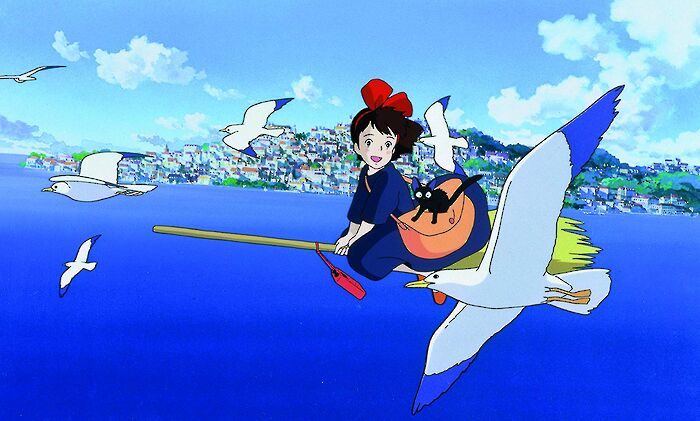Joker is more nuanced than our reactions to it
“Joker is not a hateful film – its goal is to challenge, not to incite”, writes David Rennie

Content Note: This article contains a brief mention of gun violence and discussion of cinematic representations of mental health
We’ve always had strong reactions to movies – often justifiably so. But the release of Todd Phillips’ loud and ubiquitous Joker seems to have touched a particular nerve.
Cue a nauseating glut of back and forth articles, Twitter spats, threats of boycott… it’s a discourse we’re fed up with for good reason: film sparks discourse, and debate is necessary, but something about this maelstrom of tiresome dialogue has the air of something poisonous.
The response to Joker is indicative of a pervasive tribalism that has come to the surface in recent years, sadly evident in much of our political debate, where any middle ground is eradicated. It’s a polarised, us vs them dynamic that can be translated to the discourse around this film. Joker’s violence, murky politics and aggressive cynicism have acted as a touch paper under social media channels, and one is regretfully found placed in a partisan camp depending on your reaction to it.
Much like the seething cesspit of Phillips’ Gotham, the internet is a petri dish fermenting reactionary, aimless debate. You could say the fallout was inevitable with a film of this nature, but it is not guilt-free, nor unprovocative. The seeds are there. Indeed, the protagonist’s ‘finally, someone understands me!’ rings so true it makes you squirm – no wonder it chimes with those dark corners of the internet where anonymity is conducive to incel vitriol.
Most polarising is the seeming validation of its on-screen violence. Prudence and care is understandable, not least because of the tragic precedent in 2012 following the release of The Dark Knight Rises, with the Colorado theatre, the scene of the horrific shooting, refusing to screen the film as a result.
The reality, however? This is not a hateful film: it is dirty, grimy and slippery, sure, but its object is to challenge, not to incite. It is certainly a difficult viewing experience, one that keeps you submerged with little reprieve for two hours. An unshakeable grimness pervades the runtime, with a funereal score, a revolving door of misfortune beating down the protagonist and its few moments of levity only adding to the discomfort. The ingredients may be there, but it is not overtly provocative. Instead, it is its lack of subtlety in its analysis of mental health, societal breakdown and the link between them that means it toes perhaps too finely that hazardous line between vindication and vilification.
With the political and the filmic so perversely intertwined, therefore, it becomes exceedingly difficult to view the film on a level of art for art’s sake – but is necessary in Joker’s case, wherein the art is in danger of being drowned out by external noise. On its own cinematic terms, Joker proves itself not quite to be the festival-darling masterpiece nor the shallow mess that many view it as, inhabiting rather a middle ground as a relentlessly disturbing yet effective psychodrama.
Joker is not a hateful film – its goal is to challenge, not to incite
The central performance keeps the film afloat, marking a career high for Joaquin Phoenix. Phoenix nails the physical as well as the mental decline, his insect-like physicality contrasting with the grace of the dance sequence that follows his first murder. He almost single-handedly imbues the film with its queasy mix of pathos and unpredictable dread. Photographed with satisfying fluidity in seedy hues, this is bravura filmmaking that deserves commendation, whatever your thoughts on the director’s Hangover movies.
While not the most subtle dissection of mental health, it convinces as a tragedy of deterioration and isolation, and importantly, as an origin story. Unfortunately, it veers wildly in its middle section, breaking out of its effective standalone format with an unwelcome and eye-rolling subplot that links our protagonist to a more familiar cast of characters. It is a contrived diversion that puts the brakes on the arresting momentum of the plot, which fortunately picks up in the grubby and pulsating final act.
Phillips has put out a teasingly dangerous film, designed to prod and provoke. But as the dust settles, one hopes that slowly this will be disentangled from its noxious fallout and be appreciated on its own terms. It is material that, yes, carelessly, recklessly, pushes us to look within, and is perhaps smugly looking back at its impact thinking: point proven.
It is not the film itself, rather the unpleasant polarised discussion that’s built up around it that we should be worried about, and certainly less whether the director of the Dukes of Hazzard wants to lead an armed alt-right uprising.
 News / Uni Scout and Guide Club affirms trans inclusion 12 December 2025
News / Uni Scout and Guide Club affirms trans inclusion 12 December 2025 News / Cambridge Vet School gets lifeline year to stay accredited28 November 2025
News / Cambridge Vet School gets lifeline year to stay accredited28 November 2025 Science / Did your ex trip on King’s Parade? The science behind the ‘ick’12 December 2025
Science / Did your ex trip on King’s Parade? The science behind the ‘ick’12 December 2025 News / Cambridge study finds students learn better with notes than AI13 December 2025
News / Cambridge study finds students learn better with notes than AI13 December 2025 News / Pembroke to convert listed office building into accom9 December 2025
News / Pembroke to convert listed office building into accom9 December 2025








